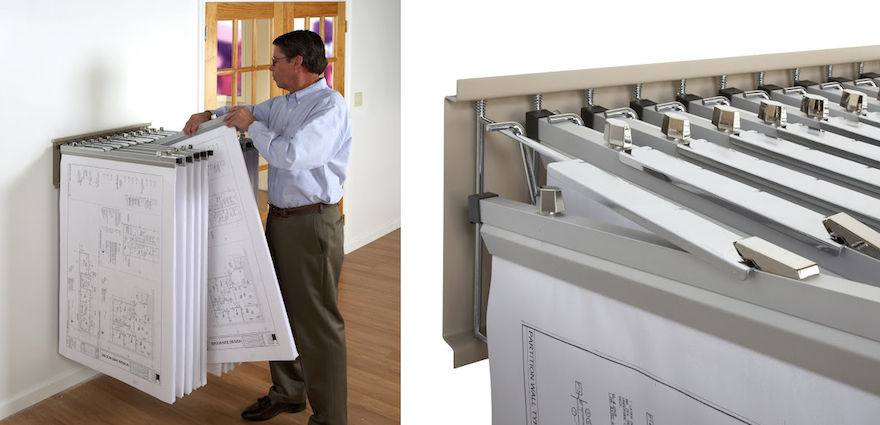
We’ve talked about filing solutions for normal office papers—but what if the papers the end-users are dealing with are blueprints, maps or other large items?
Flat files are one obvious solution. They’re incredibly easy to use—you just put your papers in the drawers (which can easily be labeled so you know what’s where). The enclosed structure means the papers are protected from dust, spilled coffee, etc. To a limited degree they files are modular; the ones shown above can be stacked two high, if they’re placed on a closed base rather than this open one. There’s usually a locking option, if the end users need that level of protection. But they do take a lot of floorspace, and they’re heavy; the Facil flat files from Safco weigh 118 pounds and up, and that excludes the base. So end users aren’t going to casually move these around.

On the other end of the spectrum, there’s the mobile trolley, such as the Hang-A-Plan from Arnos. Vertical storage like this takes less floor space, and the trolleys are easy to move around (as long as you don’t need to go up or down some stairs). With this design, the binders that hang from the trolley hold up to 150 papers, with no need to add strips or holes.

The Offset Rack from Jalema is available as a two-tier unit—an interesting option for end-users with nine feet of clearance, and a collection of documents they don’t need to access very often. Jalema uses staple strips—a reasonable option for archive-type storage, where the end user doesn’t need to add or remove documents from the bundle. Color-coded index tabs are available to help end-users find the files they need.

For end-users with the available wall space, there are designs such as this Pivot Wall Rack from Brookside Design, with a maximum capacity of 1,200 sheets. The mounting holes are stud-spaced. If end-users are unable to locate wall studs, Brookside recommends using hollow wall screw anchors rather than the one-inch screws used when mounting to wall studs.
0 Comment "Designing for Large Filing: Blueprints and More"
Post a Comment